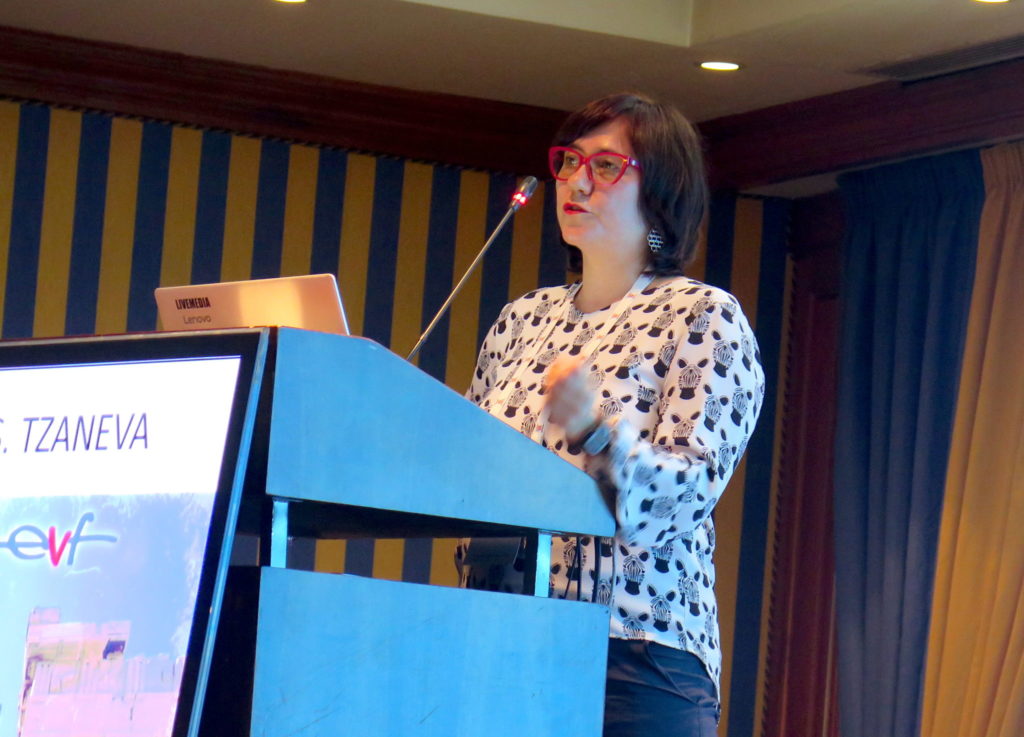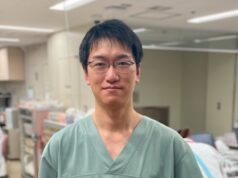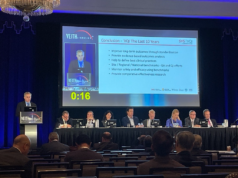
One of the first randomised controlled trials comparing two therapeutic regimes—surgery and foam sclerotherapy—in patients with anterior accessory saphenous vein (AASV) varicosis, has found that surgery can outperform foam sclerotherapy in terms of duplex sonographic recurrence after one year. However, according to Stanislava Tzaneva (Medical University of Vienna, Vienna, Austria) who presented the study at the European Venous Forum Annual Meeting (EVF; 28–30 June, Athens, Greece) these findings do not extend beyond this time period; as surgery was considered comparable to sclerotherapy after three years.
The isolated anterior accessory great saphenous vein (AAGSV) varicose is characterised by reflux in the AAGSV, but sufficient great saphenous vein (GSV); a common pathway for both primary and recurrent varicose veins. The AASV reflux impairs a patients’ quality of life in the same way, however, the literature concerning patients with this condition is lacking, especially in relation to the optimal treatment.
A study carried out by Tzaneva et al aims to address this gap in the literature and provide answers regarding treatment for the condition by comparing two methods: crossectomy and avulsion of the varicose AASV under local anaesthesia, vs. foam sclerotherapy of the AASV.
The study was a prospective randomised control trial of 40 outpatients from the Medical University of Vienna, allocated either to the surgery group, or the sclerotherapy group. The analysis found no significant difference between the median age, sex or body mass index, as well as diameter of the AASV, on the outcome measures. Follow-up was performed one and three years after intervention, with retreatment using foam sclerotherapy permitted at the first follow-up after one year.
The primary outcome measure was duplexsonographic recurrence after three years—defined as reverse blood flow of >0.5 seconds along the AASV in the sclerotherapy group, or in new anterior thigh varicosities connected to the previous saphenofemoral junction (NATV) junction in the surgical group. Secondary outcomes included: duplexsonographic recurrence in the AASV or NATV after one year, clinical recurrence, as well as neovascularisation in the saphenofemoral junction after one and three years.
Of the 40 patients initially recruited, 38 patients (five males and 33 females) completed the study, with 20 in the sclerotherapy group and 18 in the surgery group. Results showed that after one year, significantly more patients in the sclerotherapy group revealed duplexsonographic recurrence compared to the surgery group (50% vs. 16% for surgery, p=0.029).
However, Tzaneva noted that if only clinical recurrence was considered, this difference was less (35% vs. 16% for surgery, p=0.021). Additionally, after three years, duplexsonographic recurrence occurred in 52% of patients treated with sclerotherapy versus 22% of patients treated with surgery. Yet, this difference did not reach statistical significance (p=0.165). Regarding clinical recurrences after three years, the presentation was equally distributed among both therapeutic groups: 35% in the scleotherapy vs. 22% in patients that underwent surgery (p=0.73). Lastly, neovascularisation at the groin occurred only after surgery: in 26% of patients after one year (p=0.018) and in 33% after three years (p=0.014).
Concluding her presentation on the outcomes, Tzaneva said that surgery was better than sclerotherapy in elimination of reflux in patients with isolated AASV varicosis after one and three years. However, she reiterated that this difference was only statistically significant after the one year follow-up. Additionally, if retreatment with sclerotherapy was performed or clinical recurrence was considered, the effectiveness of sclerotherapy was comparable to surgery after three years.









